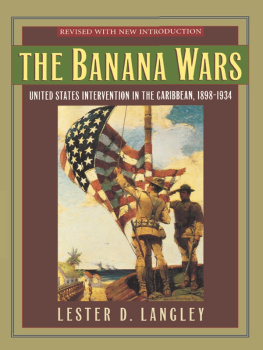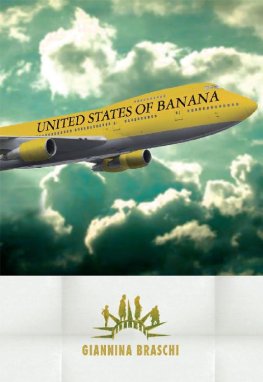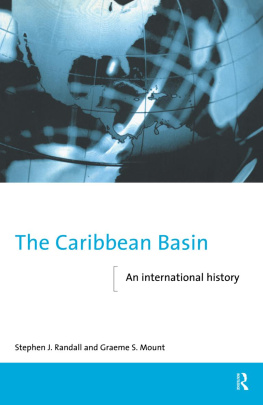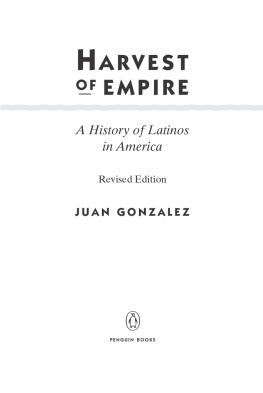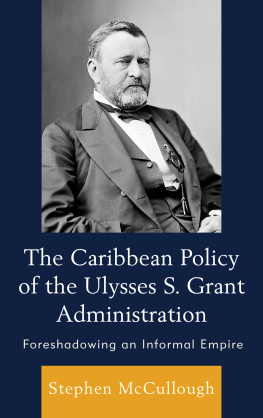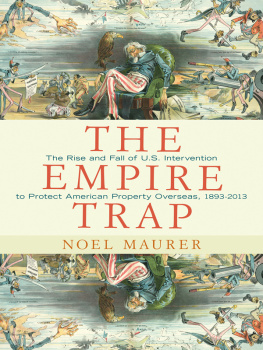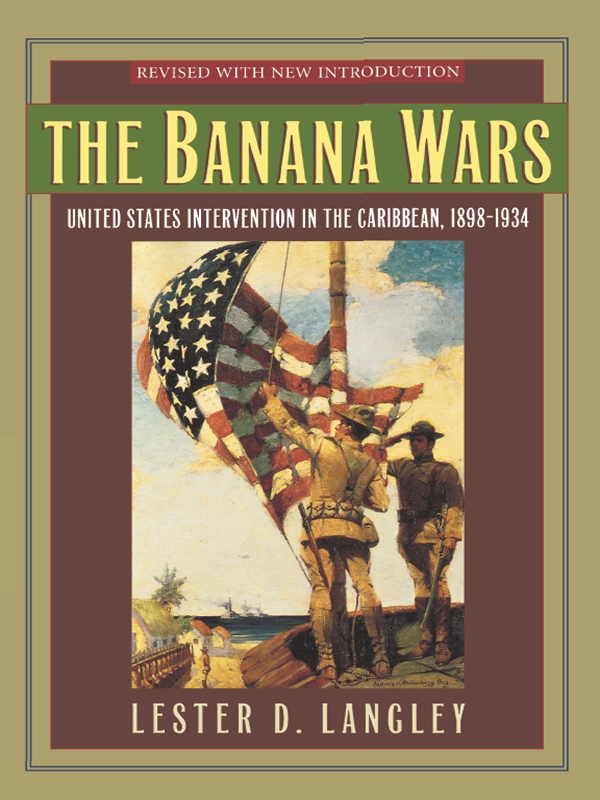ACKNOWLEDGMENTS
M y thanks to the University of Georgia History Department (where I taught for thirty years) for summer research grants that facilitated completion of this study; Paul Nagel, former head of the department, for innumerable courtesies; Sandy Herbelin, Ann Saye, Kathy Coley, Gloria Davis, Linda Green, Patsy Buffington, Nancy Heaton, and Cathy Cartey, for an efficient job of typing the manuscript; several colleaguesLee Kennett, William Leary, and Earl Ziemkewho tolerated my often simple questions about military history; Charles Wynes, who read an early draft of the manuscript; and Nash Boney, for endlessly delightful and occasionally profound discussions about the nature of Anglo-Saxon and Hispanic cultures.
The staffs of the Library of Congress Manuscripts Division and the National Archives assisted in my trek through the maze of military records and private papers of soldiers and sailors. Richard Sommers pointed out relevant materials I would otherwise have missed in my visit to the U.S. Army Military History Institute, Carlisle Barracks, Pennsylvania. Dean Allard of the Naval Historical Division, Washington Navy Yard, generously shared his knowledge of the old Navy and its role in the Caribbean. Across the street at the United States Marine Corps History and Museums Division, Brig. Gen. E. H. Simmons, USMC (ret.), and his colleagues superbly maintain a rich collection of Marine Corps materials in a setting conducive to research and were unfailingly helpful to a civilian obviously fascinated by the exploits of the banana warriors. A special acknowledgment goes to Benis Frank, keeper of the Oral History Collection; Charles Wood, Personal Papers Division; and especially Jack Shulimson, for always interesting conversation about Marine Corps history. Col. John Greenwood greatly assisted my research by providing a copy of a Marine Corps history of the Haitian intervention, then in press. Lester D. Stephens, Head, History Department, and Robert Anderson, Vice-President for Research, University of Georgia, facilitated my research in the latter stages of the manuscript.
Lt. Gen. Merwin Silverthorne, USMC (ret.), Gen. Robert E. Hogaboom, USMC (ret.), and Gen. Gerald C. Thomas, USMC (ret.) extended permission to use materials from their oral histories. Harriette Byrd Smith provided the same courtesy for use of the Julian C. Smith Oral History. Capt. Edward L. Beach, USN (ret.), a distinguished author, added to my knowledge of his father, who figured importantly in the Haitian intervention of 1915. Thomas Butler graciously permitted me to look at his fathers voluminous correspondence at the elegant family home in Newtown Square, Pennsylvania.
My appreciation also goes to the staffs of the Archivo de Relaciones Exteriores, Mexico City; Archivo General de la Nacin, Santo Domingo, Dominican Republic: and the library of the Frres de lInstruction Chrtienne, Port-au-Prince, Haiti, which houses a splendid collection of Haitian materials. I regret that despite the efforts of Dane Bowen, Department of State, and the U.S. Interests Section, Havana, I was unable to secure access to the Cuban national archives.
I am especially grateful to Richard Hopper of Scholarly Resources for his efforts in the publication of this book. And, finally, a belated acknowledgment to Ray OConnor, who many years ago tried to impress upon a seemingly unimpressionable graduate student the relationship between force and diplomacy.
ABOUT THE AUTHOR
LESTER D. LANGLEY is the author of numerous books about the relationship of the United States with Latin America and the Caribbean. Those that relate most closely to the history of U.S. military intervention in the Caribbean Basin in the first third of the twentieth century are: The Cuban Policy of the United States: A Brief History (1968), The United States and the Caribbean in the Twentieth Century (4th ed., 1989), Mexico and the United States (1991), America and the Americas: The United States in the Western Hemisphere (1989), and The Banana Men: American Mercenaries and Entrepreneurs in Central America, 1880-1930 (1994). He serves as general editor of the University of Georgia Press Series, The United States and the Americas, which includes volumes on Cuba, Haiti, the Dominican Republic, Central America, Panama, and Mexico.
EPILOGUE
I n October 1931 Smedley Butler, embittered over his failure to become the commandant of the Marine Corps, watched solemnly as his two-star flag was slowly lowered in a special ceremony at Quantico, Virginia. Two months earlier, Old Gimlet Eye had enraged his fellow Quaker Herbert Hoover by giving what was described as an antiwar speech to a convention of legionnaires:
I spent 33 years... being a high-class muscle man for Big Business, for Wall Street and the bankers. In short. I was a racketeer for capitalism.... I helped purify Nicaragua for the international banking house of Brown Brothers in 1909-1912. I helped make Mexico and especially Tampico safe for American oil interests in 1916. I brought light to the Dominican Republic for American sugar interests in 1916. I helped make Haiti and Cuba a decent place for the National City [Bank] boys to collect revenue in. I helped in the rape of half a dozen Central American republics for the benefit of Wall Street.
A professional soldier since the turn of the century, Butler was now, at age fifty, caught up in the national debate over the collapse of capitalism and its pernicious influence in American expansion in the Caribbean. He harangued the Bonus Marchers in Washington and in early 1933 told a Brooklyn audience: I wouldnt want to see a boy of mine march out with a Wall Street collar about his neck. Commenting on his speech, The Nation, a persistent critic of American imperialism, declared: General Butler ... serves his country better in peace than in war.
Butlers last hurrah was taking place just as the American military expedition to Nicaragua was winding up its affairs. By 1932 the marines had made the guard into an organization that seemed capable of dealing with the Sandinista threat. When Sandinistas tried to embarrass the celebration of the opening of the Len-EI Sauce railroad by staging an attack on the train a few days before the ceremony, Chesty Puller and his guardsmen drove them off in Wild West fashion.
Stimson had declared that once the elections of 1932 were held the marines would leave Nicaragua. His original plan for complete withdrawal had been frustrated by the Sandinista attacks in the East in March-April 1931. Once again, as in 1928, American troops and guardsmen supervised a Nicaraguan presidential election; when it was over, Juan B. Sacasa, in whose name the constitutionalist flag of revolt had been raised in 1926, had been chosen president of the republic.
Nicaraguas peace and stability could be preserved, the Americans believed, by the national guard. And the key to understanding the role of the guard in the years following lay in the political ambitions of the man Sacasa named to head it, Anastasio Somoza Garca. Somoza was, it has often been argued, the personal choice of General Matthews, the retiring American commander of the Guardia nacional. The Americans had been favorably impressed with Somoza since 1927 when the English-speaking Nicaraguan had served as Stimsons interpreter. Somoza had played a vital role in the often delicate political relations between Moncada and the marines. Julian Smith recalled: Somoza was our liaison with Moncada.... [He] was always loyal to us. I never knew Somoza to put anything over on the Americans. And when the retiring Americans put into motion their plan for staffing the Guardia commandwhich anticipated a nonpartisan guard but called for appointment on a bipartisan basisMoncada, the outgoing president, had an opportunity to name his protg Somoza as Guardia commander. The incoming executive, Juan Sacasa, reluctantly approved the choice.

